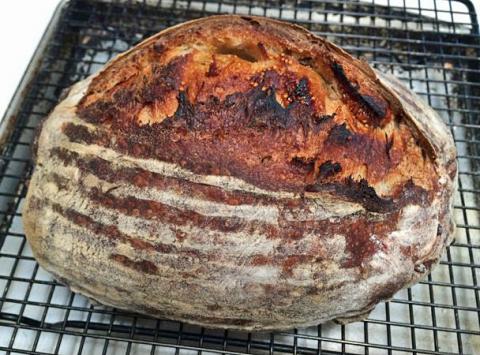I have made a variety of sourdough breads with nuts and with nuts and dried fruits. For some examples, see:
San Francisco-style Sourdough Bread with Walnuts and Figs
San Francisco-style Sourdough Bread with Walnuts and Sour Cherries
Potato-Nut Bread from South Tyrol (Thanks, Salome!)
This weekend's breads (mountain dog's formula seen here: Cherry Pecan Pain au Levain.)
I have liked them all. For the past couple of years, when I bake these I have used just a bit less than 20% (baker's percentages, of course.) fruit and the same percentage nuts. Looking through some of my newer bread books, I noticed a number of sourdough breads with nuts and dried fruits that used 1.5 to 2 times the proportions of them as I had been using. So, I thought I would take one of my known formulas and simple double the nuts and fruit. How could it be bad?
My base formula was the one for Walnuts and figs. (See the link, above.) But I had just bought some lovely pecans, so I weighed out 200g and toasted them for 6 minutes at 300dF and made Sourdough bread with pecans and dried figs.
The dough looked awful lumpy, even when the loaves were proofed and ready to bake. I dunno about this ....

The bake took about 10 minutes longer than usual for a bâtard this size, presumably because the extra figs evaporated more water, thus keeping the loaes cooler. Maybe. But, the loaves had better bloom than usual for this type of bread, the crumb looked pretty nice, and the taste was wonderful. (It passed the critical "Susan leaves the dinner table to cut herself another slice" test.)


I also baked a couple loaves of My San Francisco Sourdough Quest, Take 4.


A good baking weekend. I hope yours was too.
Happy baking!
David


















